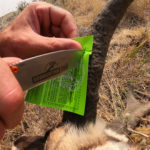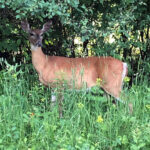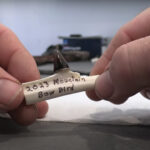Nearly a week had passed since the last time I heard a bull elk bugling within shouting distance of wherever I happened to stand, sneak, nap or eat lunch in the Targhee-Caribou National Forest.
But I was far from bored or discouraged when climbing into my treestand at 6 a.m., 15 minutes before first light on Sept. 15. I had left camp roughly 1.5 miles away and 1,500 feet below at 4:30 a.m., and once again neither heard elk nor saw their eyes reflecting in my headlamp during the 90-minute ascent.
Three evenings before, nearly three hours before dark, a brown-phase black bear had walked in to drink from a muddy wallow I was watching. The bruin drank deeply from three different spots around the wallow, its slurping sounds carrying to my perch 22 yards away. The bear hung around about 2 minutes before suddenly raising its nose, verifying my human presence, and then loping back down the trail.
I had never seen a bear visit a wallow before, so I recorded the event with my iPhone, replayed it once to ensure I had hit the “record” button, and then resumed waiting for an elk, which never came.
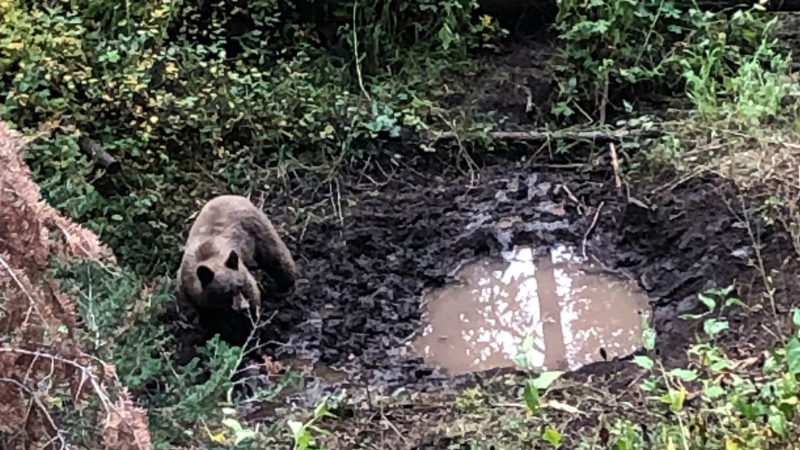
The next morning, however, on the ninth day of my annual bowhunt for elk, I finally got a shot at a cow elk, but blew the opportunity. For reasons I still don’t understand, I adjusted my slider sight for a 32-yard shot, even though my rangefinder only seconds earlier had marked the distance at 38.7 yards. Call it buck fever or simply misreading the dial, I messed up. When I released my arrow, it clipped the cow’s sternum while zipping past harmlessly.
The next morning, Sept. 14, I saw two bulls from the same stand, the first at 9 a.m. and the second about 9:20 a.m. The first bull was herding several cows and calves across a meadow 100 yards away, but let them stop to graze on dried grasses and other browning plants before disappearing in the forest cover east of me. One cow paused to look my way when I calf-called, but hurried on when the 5-point bull trotted in from an angle, intent on keeping her from straying.
Soon after rehanging my bow from a branch above me in the aspen, I heard elk trotting in on me from the west, seemingly trying to catch up with the herd that had just passed. Grabbing my bow and clipping my release to the bowstring below my nocked arrow, I made a loud “blat” sound as the last of four cows and calves trotted past at 20 yards.
I was hoping, of course, that she’d stop to offer a broadside shot for my 4-blade broadhead. Nope. Instead she veered hard right, as if seeing a wall blocking her path. She then got back on track, heading for the same exit trail used by the previous herd.
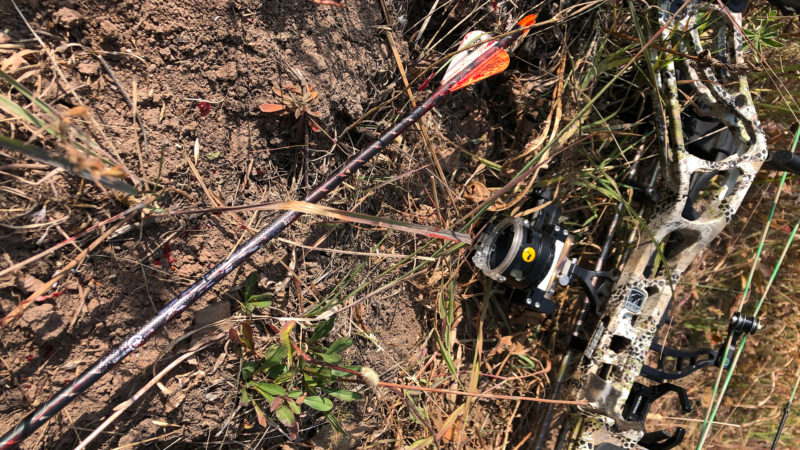
Just then I heard a commotion uphill behind me. As I turned to look, a 4-point bull stopped its approach, looked at the elk now departing 100 yards away, and seemed confused by their sudden detour. A cow I hadn’t seen then stepped out 10 yards ahead of the young bull and trotted southward, away from my stand. The young bull followed without pause, leaving me to kick myself for being too impatient. If I had just let the cows pass quietly, the older cow with the young bull likely would have passed broadside at 20 yards, offering a choice of near chip-shot opportunities.
The morning of Tuesday, Sept. 15, passed so quietly that I pulled out my iPhone at 9 a.m. to check email, post a couple of social-media photos, and wish my granddaughter Lauren a happy third birthday. Cell-phone reception is sometimes strong atop these mountains.
My plan was to sit until noon unless a bull started bugling nearby. If that happened, I’d try to pinpoint its location and direction of travel, and climb down to try intercepting it. Just before 10 a.m., a bull bugled once from the south, possibly a quarter-mile away. It didn’t bugle again, however, and didn’t respond when I bugled a challenge back and then tried sounding like a lonely cow elk seeking a late-morning fling.
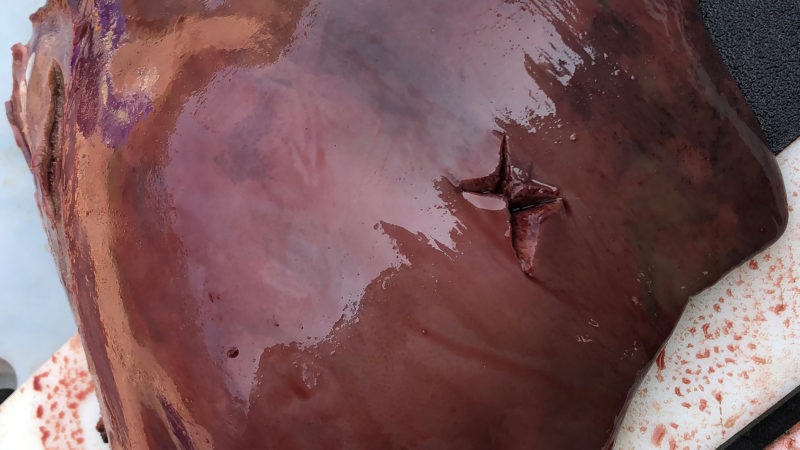
Five minutes later, a calf entered the meadow about 200 yards away, followed by two cows. A bull followed soon after, possibly the 5-pointer I saw the day before. The bull paused and looked my way every time I imitated a calf or cow calling, but soon resumed dogging the sure things it was following.
Disappointment descended again as I rehung the bow and checked my watch, which read 10:10 a.m. Once more I replayed my blown opportunities the day before, knowing with hindsight’s clarity what I should have done to get that 4-point bull to walk in front of me, pause at 20 yards, and fold seconds later after my broadhead inflicted a massive hemorrhage.
My daydream ended when a cow elk stepped out of the forest at the meadow’s far edge, apparently scent-tracking the bull, calf and two cows that crossed there five minutes before. Instead of following them, however, the cow turned west and meandered in my direction while grazing grasses and pausing to sniff the ground.
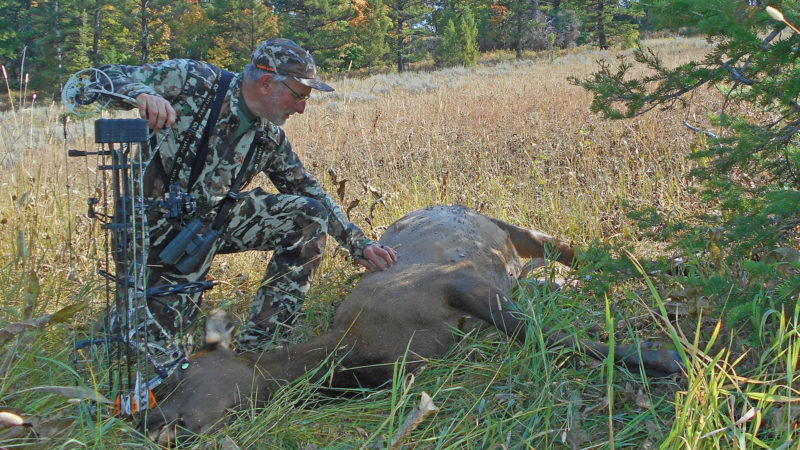
Just when it looked like she would walk within 25 yards, the pre-set distance on my bow-sight, the cow turned broadside and headed toward a clump of aspens 45 yards downhill from me. I quickly adjusted my sight to the new setting, pulled my bow to full draw, and cow-chirped when she stepped into the open.
My arrow streaked downhill, striking the liver just behind the cow’s left rib cage, and angling out about 6 inches behind her right shoulder. She toppled in death about 10 seconds later after running 60 yards.
After regaining my composure, I descended the tree, pulled my first cow elk into nearby shade, validated the Idaho carcass tag, and began the satisfying chore of reducing my bow-kill to meat.

 By
By 